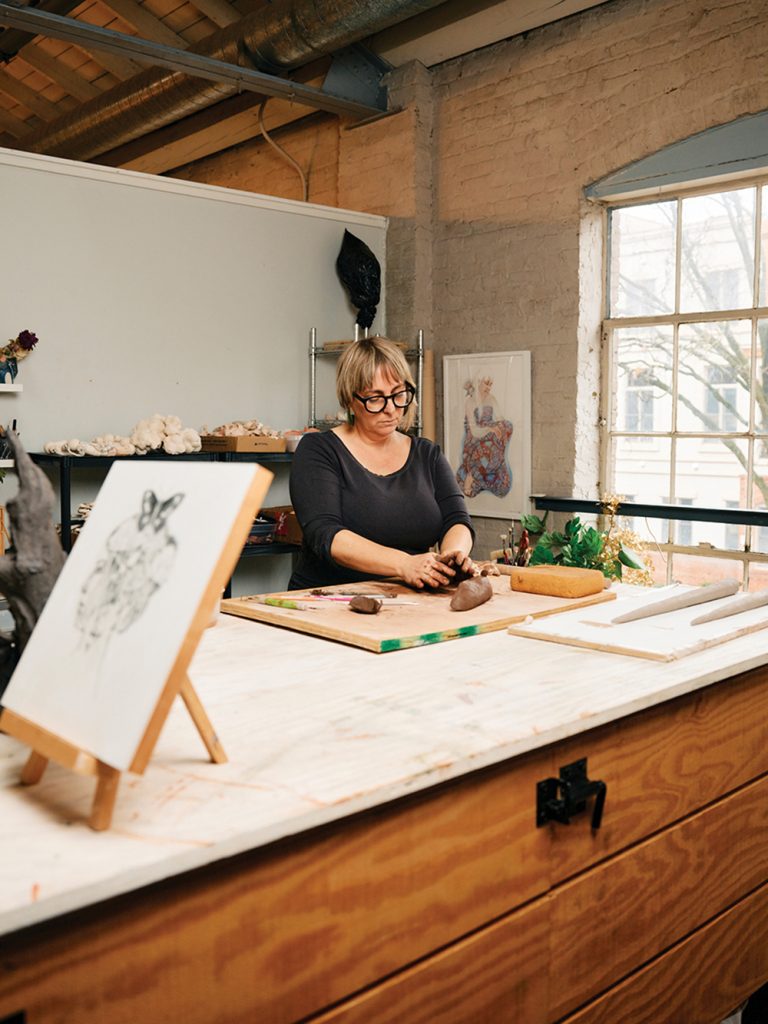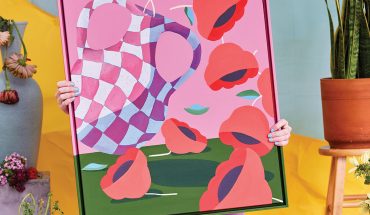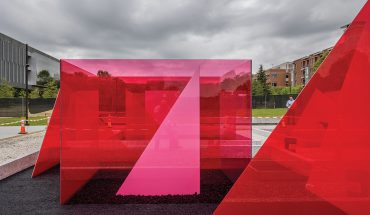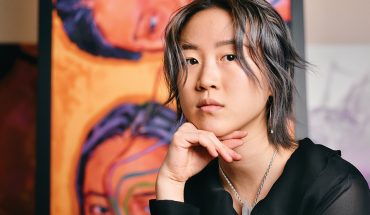The mixed-media artist and sculptor, who works from a studio in Artspace, discusses the experiences that shaped her career.
by Colony Little | portrait and studio photography by Joshua Steadman | images from “Adrift” exhibit by Sally van Gorder
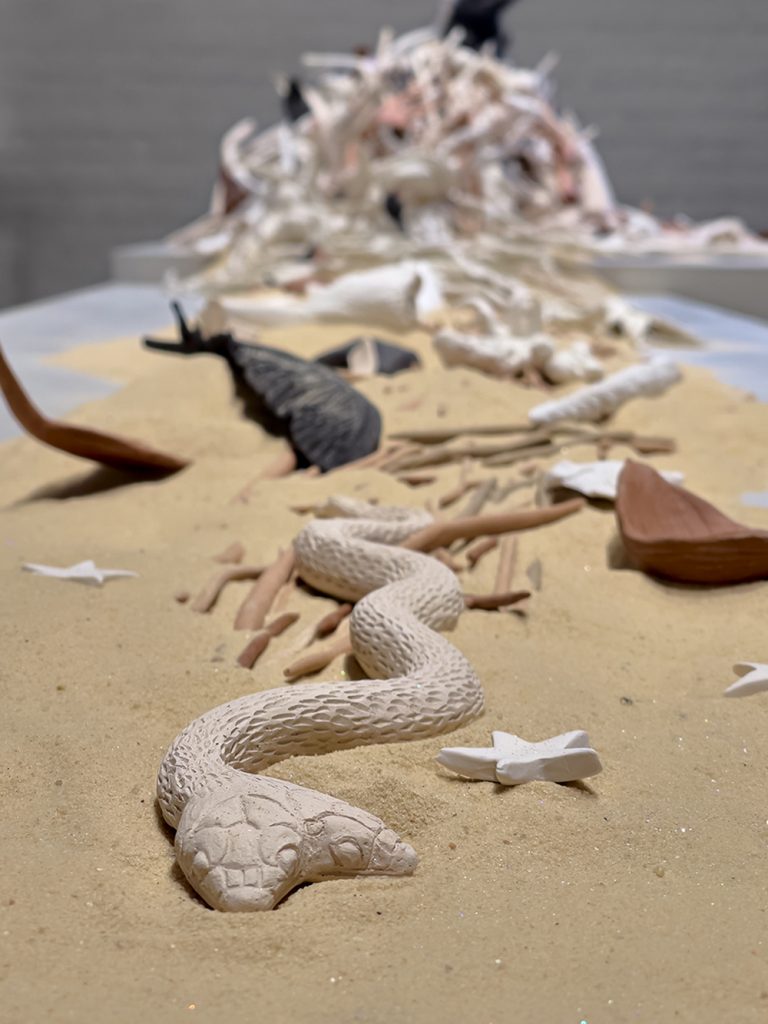
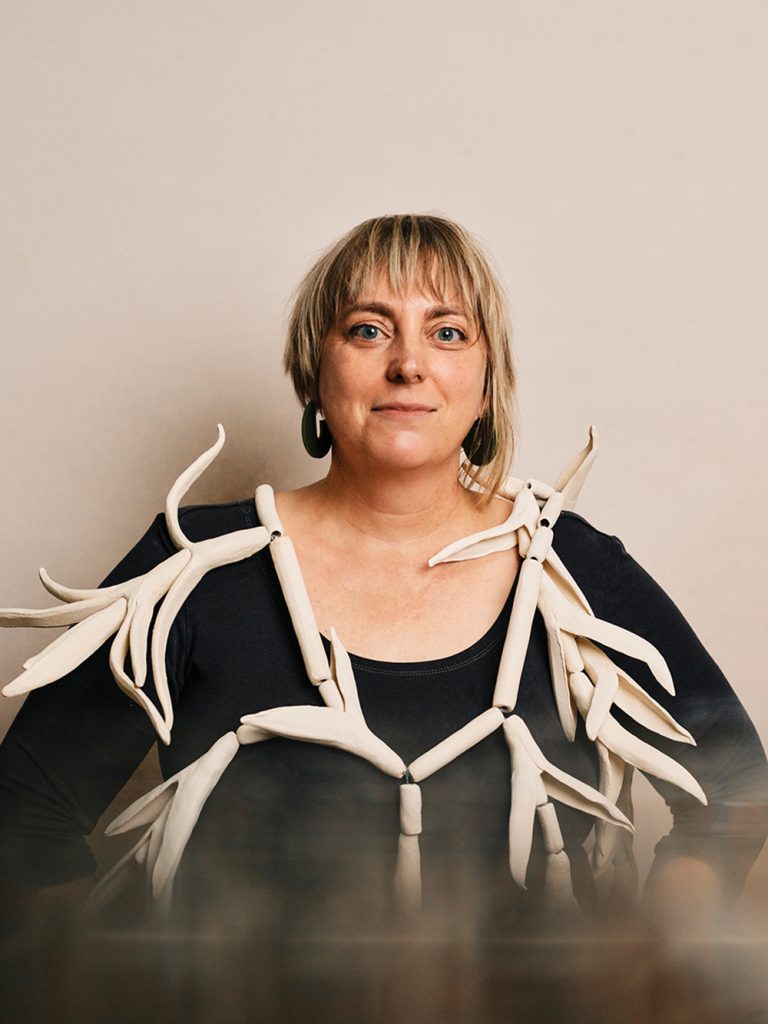
For as long as she can remember, the mixed-media artist and sculptor Oami Powers dreamed of a life in the arts — but it proved an elusive pursuit. “I struggled with what a lot of working-class kids struggle with, in thinking that being an artist is not a real job,” she says. After an early interest in art, she was forced to fall back on practicality, building a successful career in fashion and textile design over 20 years in the Bay Area, even creating a clothing label with a friend in the early 2000s.
But after relocating to Raleigh a decade ago, she reacquainted herself with the practice. And her work in a January solo show at Artspace, Adrift, signaled a movement toward more abstract works that can be manipulated within different environments.
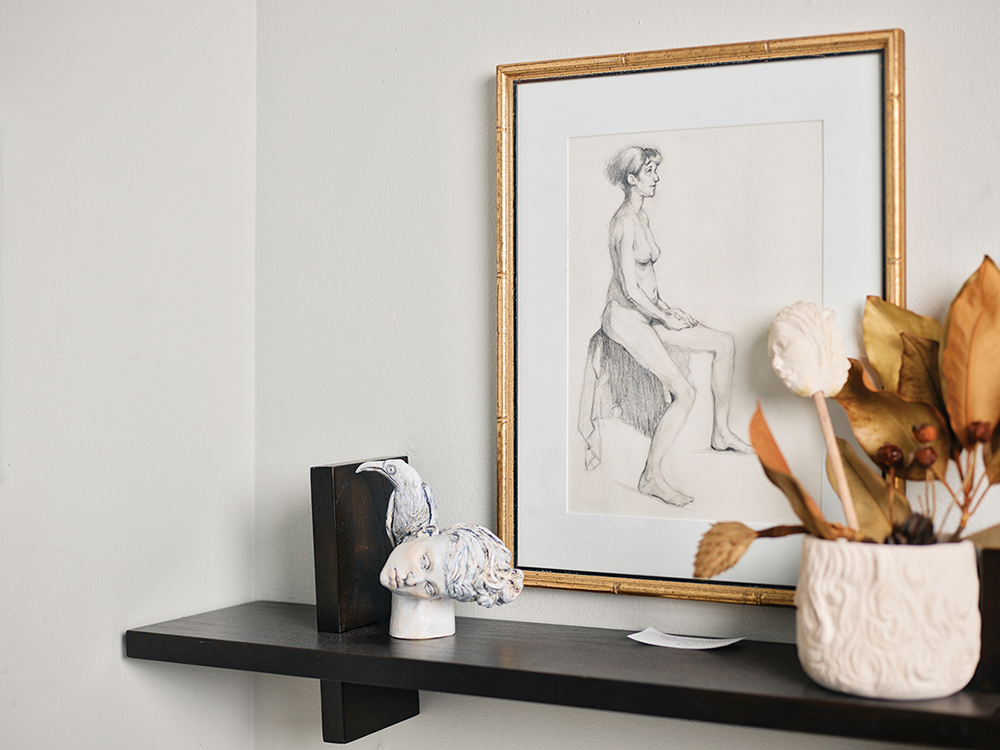
Growing up, Powers was inspired by the creative energy of her native North Berkeley. She learned to sew and made porcelain dolls with her mother, who was a hospice nurse with a creative bent. “She was always making things, and was one of those people that was always moving, always busy,” says Powers. “She taught me to sew when I was 6 or 7 years old.” Her parents separated when she was 13, and Powers, along with her twin sister, moved to New Zealand with her mother.
There, she honed her painting and sculpture skills, and after high school she applied to art school — a rigorous process that includes exams, building a portfolio and being ranked against other hopefuls. She didn’t make the cut the first time, so she enrolled in the University of Canterbury. “I got my art history degree, went back to community college and resat the art exam,” she says. Her second attempt was much more successful: “I got third in the country for painting, and top 10 for sculpture.”
While this validated Powers, she ended up moving back to the United States, living with her father in the Bay Area instead of going to art school in New Zealand. There, she enrolled in the California College of the Arts. Expenses ultimately forced Powers to leave school behind and with it, she thought, her career as a full-time artist.
She started working in the fashion industry, working for a boutique dying and printing fabric. “Clothing design was a way of having a creative career that was practical,” she says. In 2010, Powers and her husband relocated to Raleigh, where she continued in clothing design, then shifted to product development and project management for the product marketing firm Designbox. But still, the artist’s life called her.
In 2015, she took a class led by Brandon Cordrey at the Pullen Arts Center called Anatomy for the Artist. “It felt like I was starting over again, but Brandon simply encouraged me to do more,” she says. Powers started drawing regularly and soon realized she needed a goal to work toward, so she applied to the NC Emerging Artist in Residence at Artspace. “I didn’t get it, but Annah Lee saw something in my work,” says Powers.
The downtown arts center occasionally partners with local businesses to showcase local artists, so Lee, the creative director at Artspace, looked for a fit for Powers. Lee connected her with coworking provider HQ (now Raleigh Founded) to create an exhibit for their space. “It’s an opportunity for emerging artists to build up a body of work to show in a more relaxed space than a formal gallery,” says Lee.
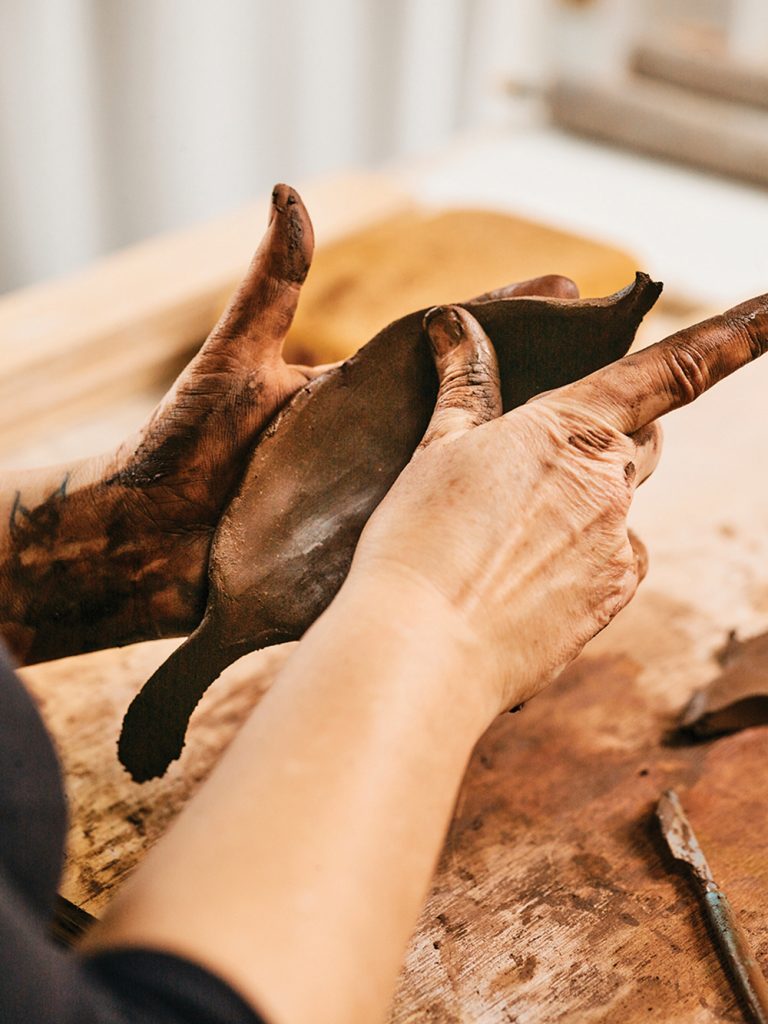
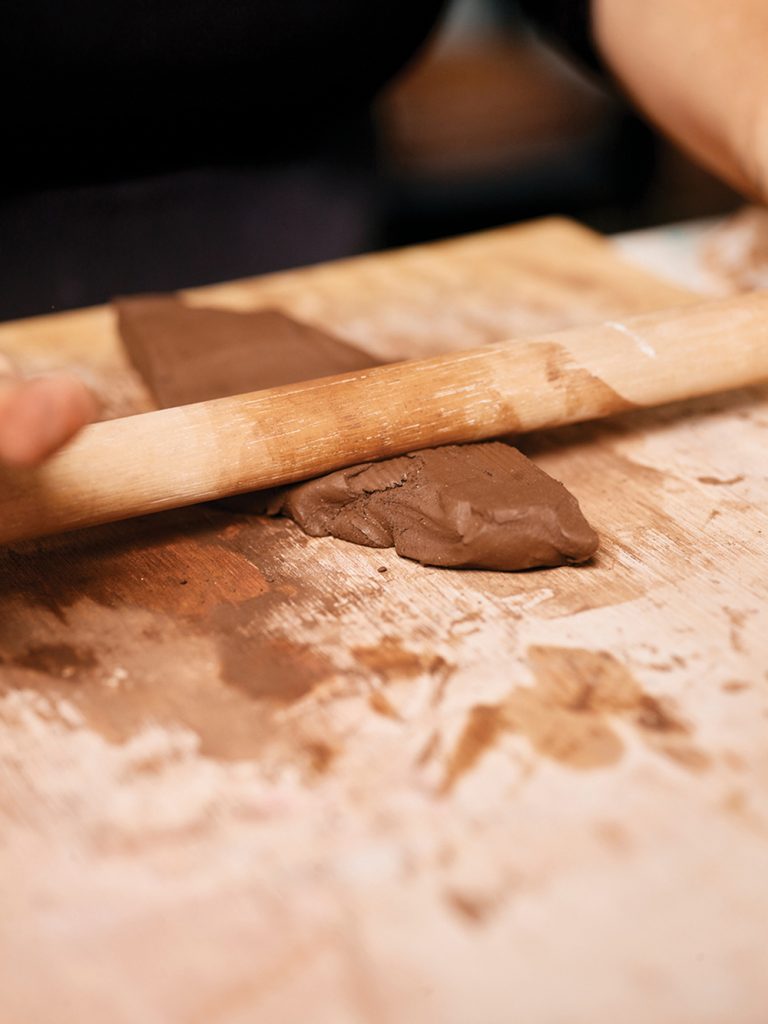
Powers created 11 works for HQ in 2017. Called A Distant Heart, the mixed-media series included portraits, heart-shaped sculptures made from woven strips of paper and mask-like portraits of women in turbans, each featuring colorful prints. They were an homage to her mother, who passed away in 2007. One piece is titled Pīwakawaka, the Māori name for a New Zealand fantail, a bird that is considered a messenger of death in Māori culture. In it, the bird is perched on the shoulder of a woman wearing a printed dress in shades of azure and coral.
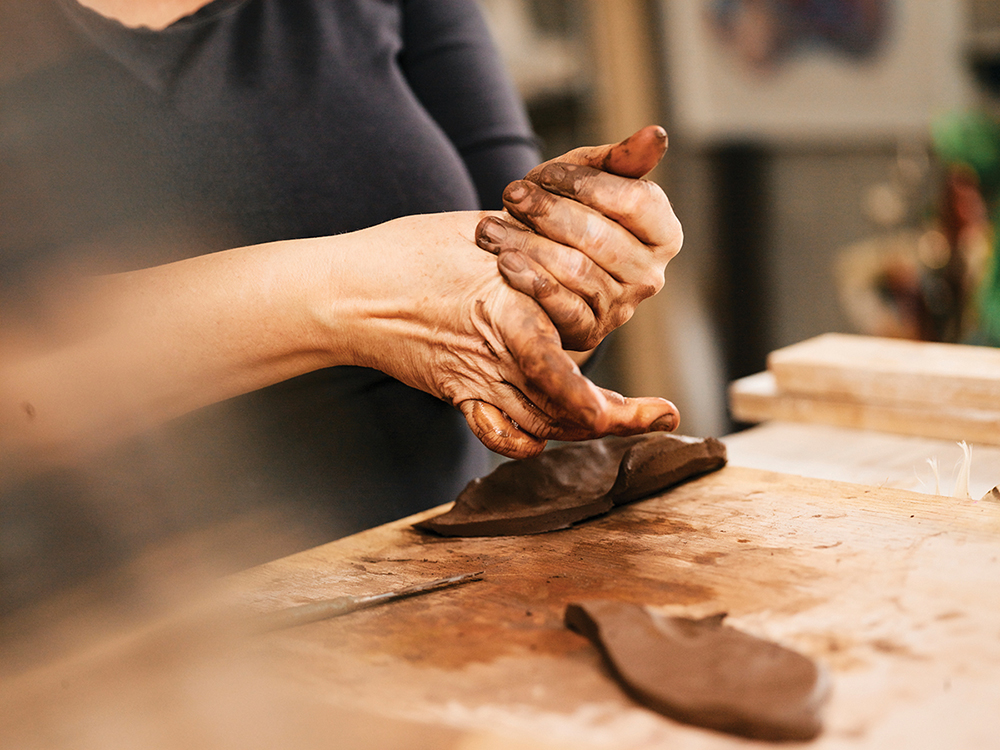
The pīwakawaka is a powerful symbol for Powers; shortly before her mother passed away, her sister found her mother sitting with one of the birds. In the portrait, Powers transmutes the symbolism of the bird into an emblem of healing. She describes this series as a “posthumous collaboration” between herself and her mother.
This process of delving into memory catalyzed Powers’ artistic career. “For someone like Oami, who at the time was just starting to come into her identity as an artist, creating and showing a concise body of work like A Distant Heart felt like an important step in her professional growth,” says Lee. “It allowed her the freedom to experiment, explore and to push her ideas without the pressures of a formal exhibition.”
In 2018, Powers was chosen as one of two Emerging Artists in Residence at Artspace. “This made an incredible impact on my practice,” she says. “I became part of the community of artists at Artspace and developed the discipline of being in the studio 20-plus hours a week, the residency requirement. Plus, I got feedback and learned how to talk about my work with anyone, from a tour group of grade schoolers to a visiting artist or curator.”
After her residency, she pursued a new medium. “I really wanted to experiment with sculpting in clay. I had this intuitive desire to do it, but I was intimidated and had so many questions,” she says. In 2020, she signed up for classes at Penland School for Craft, but the pandemic shut everything down. Classes were canceled, leaving her artistically stranded.
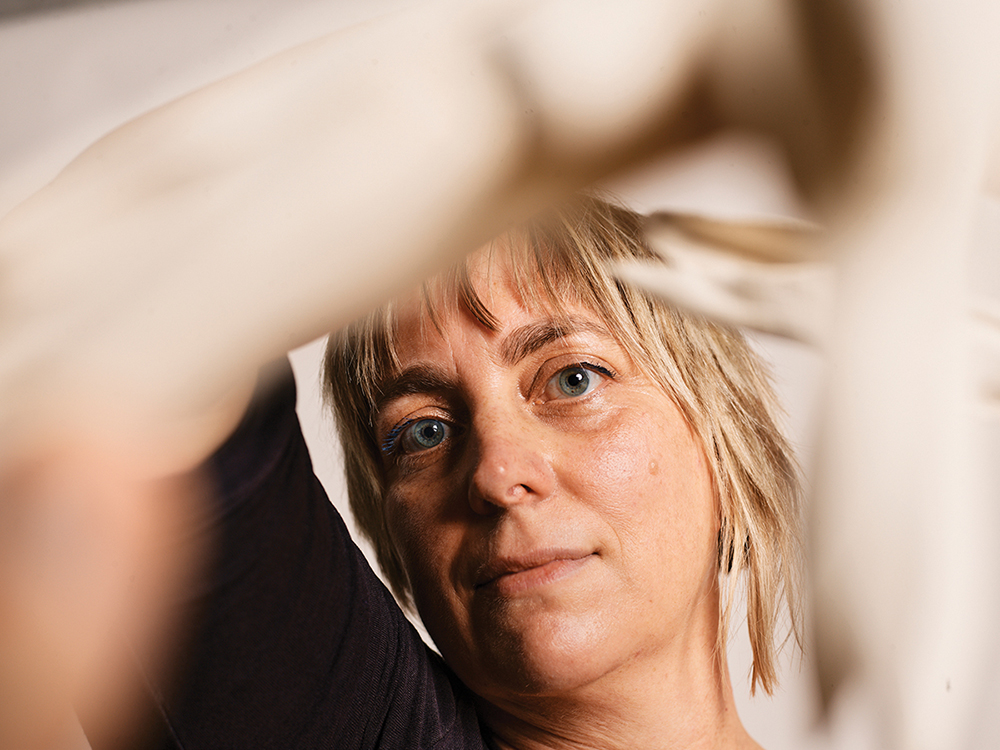
Then, a few months into the pandemic, she went into her studio at Artspace and found a block of clay. “My studio mate [jewelry designer Liz Esser] left it for me, along with her ceramics tools — it was this gentle hint to just get started,” she says. She took classes that Penland sculptor Cristina Córdova offered to the public via Zoom. “I never looked back, I was obsessed. It just felt like it opened a door in my brain, and it shifted everything for me,” she says. For Powers, clay is a medium of memory: “I love that it’s just dirt and water and fire. It’s both complex and humble. There’s this transformation from movement to stasis that happens in the kiln, turning this malleable, wonderful substance into an object. I think for me it’s become a way of drawing in three dimensions.”
While her sculptures have been largely figurative, focusing on emotive clay portraits of women, for Adrift, Powers hand-sculpted over 350 individual pieces from red and black clay, paper clay, and porcelain, and arranged them on a bed of sand. “I’d been making these sculptures that were either designed to hang on the wall or sit in space on the table, and I started to feel this need to engage with space in a bigger, deeper way,” she says.
Clay deer antlers mingled with replicas of raven feathers, abstracted coral and unicorn horns. Profiles from broken porcelain busts were partially submerged in the sand, alongside long serpents placed throughout the work. “By focusing on creating objects whose form, scale and surface coalesce in a jumbled wave, she revealed the strength and fragility of her own experience in a language that we can all connect to, and presents the human figure in a powerful new way,” says Lee.

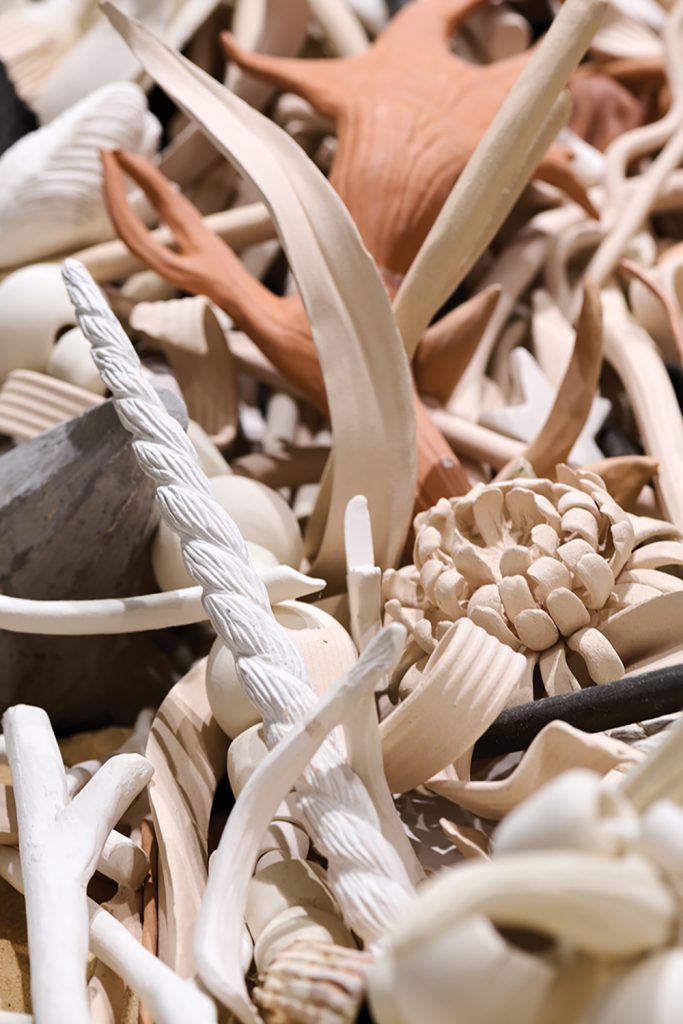
The sandbar motif represents the detritus that washes ashore from the ebb and flow of memory, says Powers: “I was already thinking about memory as a residue of our lives, as something that’s left over, and I got really entranced with the idea that we tend to think of memories as being absolute, but it turns they’re very malleable and unreliable.”
For Powers, these fragments are the remains of an artistic journey whose path meandered, allowing her to pick up experiences and memories that inform her work.
While Adrift closed in January, Powers is looking to show the work again in a new space that will conjure new associations and meaning. Until then, the objects she created are now neatly organized in her brightly lit studio, where the portrait of her mother watches over the space, awaiting the next wave of creative inspiration that will come to the surface.
This article originally appeared in the March 2024 issue of WALTER magazine.

